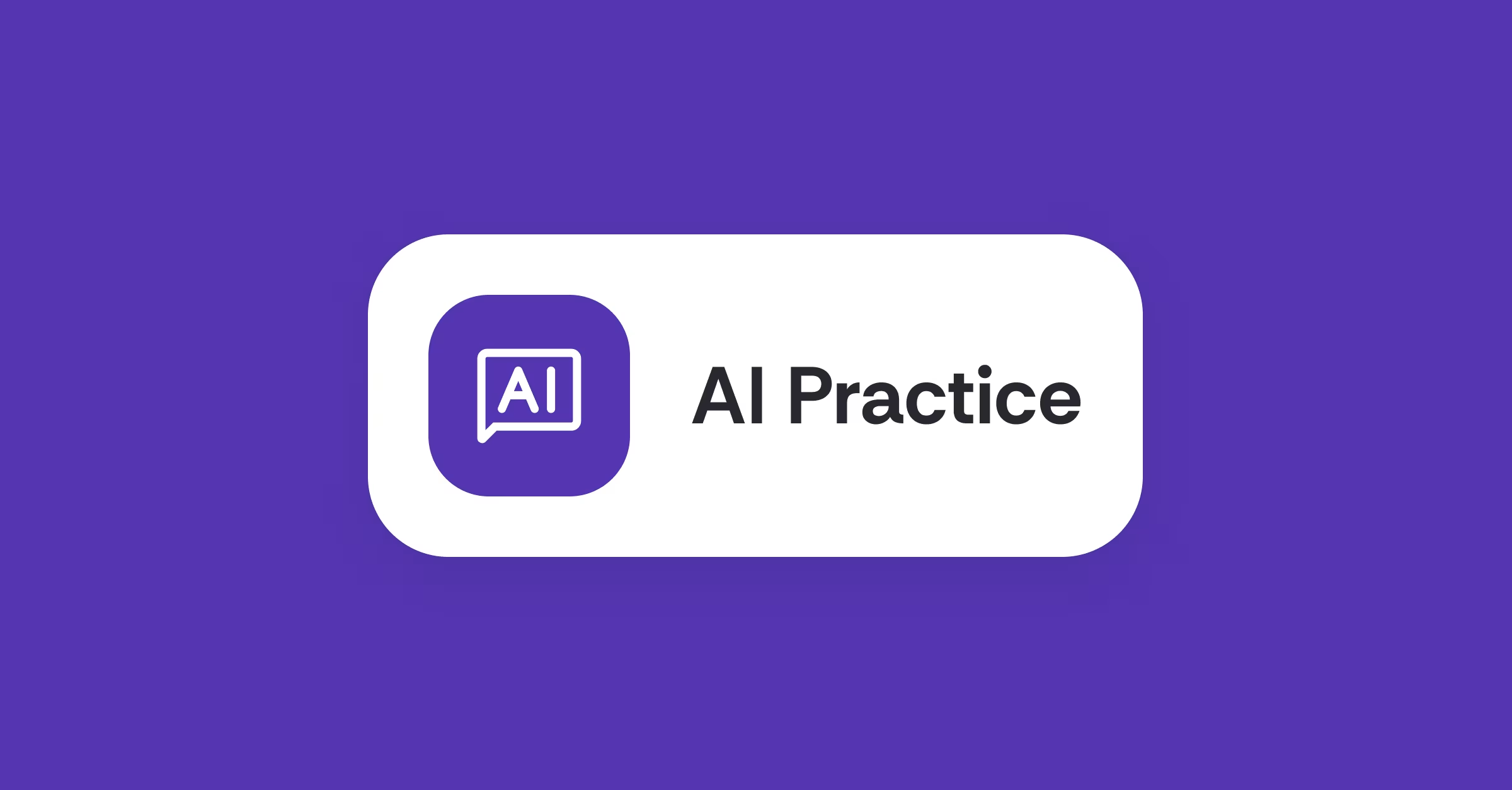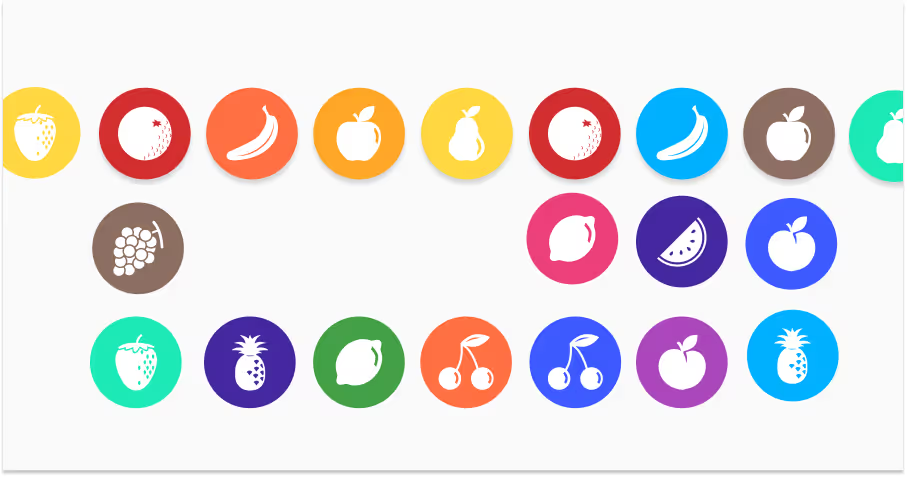
Explore the concept of inner feedback – using self-generated feedback to empower critical thinking and active learning
Read more.png)
Explore the emerging trends shaping higher education in 2025 and how FeedbackFruits helps institutions create impactful learning design.
READ MORE
Discover how institutions reduced feedback and assessment workload in 2025 and how to reclaim educator time with structured workflows in 2026.
READ MORE
Discover how FeedbackFruits AI Practice turns AI use into a powerful learning experience building reflection, dialogue, and literacy.
READ MORE
Discover how Applied Soft Skills Pedagogy empowers students to master communication, leadership, and teamwork through authentic learning.
READ MORE.avif)

Discover how Applied Soft Skills Pedagogy empowers students to master communication, leadership, and teamwork through authentic learning.

Explore the concept of inner feedback – using self-generated feedback to empower critical thinking and active learning

A comprehensive list of inclusive teaching strategies based on the UDL framework
.avif)
Discussing the present and future of inclusive education, along with its benefits and how to create a university for all

Best practices and strategies to support faculties in creating engaging, inclusive learning experiences across any modality.

Explore how to best implement active learning strategies with deep understanding of different modalities

Motivate your students to actively respond to your questions and discussions in social annotation, using the 6 best strategies in this blog

An overview of the state of competency-based education (CBE) in higher education around the world

Explore these 8 steps to consider for institutional leaders when integrating AI across the campus to increase productivity and efficiency.

Explore the competency-based education (CBE) framework and how it allows institutions to create an inclusive, sustainable learning environment.

Discover practical examples of using AI tools to engage students throughout the learning process and help develop lifelong skills

Best practices and strategies to promote inclusivity and equity in hybrid environments.

Learn how to create learning environments that nurture growth with strategies for holistic assessment and feedback.
.avif)
Explore 9 principles to create a student-centered learning experience that stimulate engagement, inclusivity, and skills development.

Explore the definition, benefits and how to integrate Regular Substantive Interaction (RSI) in any course modality.

A detailed guide on how to plan and plan and facilitate a successful hybrid course that stimulates engagement, interaction, and retention

Explore resources and solutions to create engaging and scalable courses, whether online, face-to-face or hybrid.

Discover 5 reasons why technology is still critical in F2F classrooms, and it can support faculty optimize the in-person learning experience

An insightful breakdown of programmatic assessment and how it can support competency-based education.

9 technology-assisted strategies to minimize time spent on manual course set-ups, and maximize student engagement, retention and success.

5 ways to personalized the learning experiences based on the key student-centered learning principles

The 5 key trends that will certainly take place in the upcoming Fall semester and beyond, according to educational leaders.

Discover the difference between differentiated and personalized learning, along with how to apply these two approaches in hybrid classrooms.

A comprehensive guide to visualize the e-learning tools according to different pedagogical goals.

An 11-step framework that guides you to utilize pedagogical technology in implementing the flipped classroom model.
.avif)
Explore the concept of Inclusive Course Design and 4 key principles to consider when designing an inclusive, engaging course.

This article looks at how Interactive Study Material and Comprehension differ, in terms of the functions and usages.

This article highlights 5 key trends, which we believe are, and will be driving Australian higher education in the future.

5 strategies to facilitate quality assessment and feedback that nurture growth mindset and 21st century skills.

Linda Lee of The Wharton School shared how FeedbackFruits tools were chosen to facilitate a large-enrolment course for first-year students.

Matteo has been teaching online over the past semester, and here is what he has to share.

10 essential steps for better course design to help you prepare and deliver engaging materials in your hybrid and online teaching next semester.

This article dives into methods for creating quality rubrics that can help measure students' performance critically and effectively.

In this article, we’ll dive into understanding why we use rubrics, what they are, and how they can contribute to the student learning process.

This article elaborates on the key elements for effective peer feedback, and strategies to facilitate peer feedback to support lifelong skills.

The second article of the Feedback series discusses Learner variability, Universal Learning Design, and Multimedia feedback.

This article explores the concept of feedback, its benefits in teaching and learning, and the mediators for effective feedback.

Explore a novel pedagogical approach to course design that helps prepare students for the labour market

Discover how to initiate high quality peer review by utilising these 7 essentials in designing peer feedback criteria.

These 4 strategies will help you address the challenge of generating student motivation and engagement in online learning

Utilize social learning theory and technology to enhance student engagement and interaction across modalities.

Learn how collaborative learning can foster a community of engaged, active, and critical students that are eager to participate in class.

Understand the ins and outs of formative and summative assessment, and explore some practical strategies for your next assessment activity

Explore the fundamentals of team-based learning approach, its benefits, and useful strategies to optimize this framework for your online course

Discover how the HyFlex model is one of the best strategies for universities to improve online learning and create engaging course design

The best tips to improve students' retention is boosting engagement in course design

Moving online during COVID-19 is not easy for universities. How did students react to this change, both educationally and economically wise?

This week's column covers the topic os assessment, which has become a major issue within the higher ed community in the light of the pandemic.

Explore the highlights of our latest webinar: "The Power of Peer Learning in Business Schools" featuring speakers from the Wharton School

This week we took a look at how remote learning and proctoring can be done better by universities.

This week's digest column dives into improving learning experience for students for next semester.

Learn about active learning: a powerful pedagogical method that increases students' learning potentials

Course design is a fascinating but also complex concept. Learn why well-crafted, and innovative, course design is best for students’ learning

Explore best tips and strategies to upgrade your course design to engage and track students better in virtual environment

The abrupt shift to online learning opens a great opportunity to try new assessment types and tools

We discussed the pros and cons of online courses and explained how teachers can improve them based on existing literature.

We'd like to share 7 key takeaways from our partners' experience in creating online courses during COVID-19

LMS adds substantial value for both teachers and students but using an LMS without plugins is like using a smartphone without apps.

Students dread group work because they know that not every member contributes equally. Peer feedback then comes as an effective solution.

Balancing both formative and summative assessments ensures that the students and teachers together create knowledge that improve the world.

Rubrics work well to ensure constructive feedback provided by students because they clarify expectations for both targets and quality.

Anonymity is necessary to reduce bias when facilitating peer assessment in a collaborative learning activity.

Besides receiving feedback only from teachers, relevant and effective feedback could also be provided by peers
.avif)
Falmouth University’s Games Academy bridges education and industry through real studio teamwork, using FeedbackFruits to create fair, reflective, and authentic assessment at scale.

Discover how Hertfordshire Business School transformed its Global Executive MBA with FeedbackFruits, turning low interaction into a six-phase, engagement-driven journey that boosted collaboration, improved performance, and reduced dropout risk.

Explore how FHSU utilized FeedbackFruits’ solutions to elevate the peer feedback process and stimulate collaborative learning, and what encouraged FHSU to let FeedbackFruits be a supporter in achieving their pedagogical goals.

Educators at EDHEC successfully streamlined the peer feedback process with enhanced engagement, thanks to FeedbackFruits

Teaching communication skills to over 400 students is not an easy job, yet Sofia Sá managed to create engaging course by implementing flipped classroom and active learning.

Discover how Reykjavik University leverages technology to scale self, peer, and group assessment

Instructors at Central State University implemented technology-enhanced social annotation, peer feedback, and reflection to improve engagement and critical thinking.

An instructor at Boston College utilized technology to optimize the team-based learning process for his hybrid course.

Across several hybrid courses at TU Dublin, instructors used Peer Review to streamline peer feedback, resulting in student submissions of higher quality

How instructors at Frankfurt School of Finance and Management used FeedbackFruits assessment tools to promote critical thinking, quality feedback, and save time from manual course set-up.

At Hogeschool Rotterdam, the Peer Review tool was used within a nursing course to improve students' professional communication skills.

Dr. Andreas Osterroth at University of Koblenz and Landau faciliated a rigorous feedback process that stimulated active engagement, using FeedbackFruits tools.

The University of Delaware minimized time spent on group work facilitation, while maximizing students' performance and collaboration skills.

For his language course, Dr. Yasuhisa Watanabe at The University of Melbourne utilized several FeedbackFruits to encourage deeper understanding, while saving time working with manual set-up tasks.

Deakin University developed and adopted an authentic assessment project scaling across several subjects and courses.

Two instructors of TIAS School of Business and Society enhanced asynchronous engagement in blended classrooms.

Instructors at Central Michigan University optimized the team-based learning process in a 200-level Biology course with FeedbackFruits tools.

Learn how the Miami School of Law faculty incorporated different FeedbackFruits tools to elevate their online courses.

Dr. Jess Mitchell at Monash University enhanced student engagement and collaboration during the switch to online learning.

Instructors at South Plains College utilized several tools to increase online engagement and interaction in two English courses.

Learn how a Korean language instructor at Cornell University used Peer Review to improve students' language skills while reducing the workload

Peer Review was used to help students improve peer feedback and presentation skills at Amsterdam University of Applied Sciences.

Instructor at Avans Hogeschools used Automated Feedback to improve students business writing skills in a blended setting.

Dr. Adam Cardilini of Deakin University facilitated effective, high quality feedback in a large, and diverse student cohort using Automated Feedback

Linda Lee, Instructional Designer of the Wharton School shared how FeedbackFruits tools were chosen to facilitate a large-enrolment hybrid course.

Denise Kreiger and Monty Kaplan of Boston University successfully facilitated peer feedback in large student cohort using Peer Review.

Instructors at Queen's University implemented Peer Review and Group Member Evaluation to foster asynchronous collaboration online.

Texas Tech University promoted an active learning environment with feedback and interaction upon the switch to remote learning.

Carlson School of Management saves times and facilitates effective, scalable group work and peer feedback

Instructors at the Wharton School facilitated effective peer feedback in large size classes, using Peer Review.

Professor Karyn Stockar of University of Delaware used Group Member Evaluation to save time facilitating group assessment

Instructors at Deakin University successfully facilitated and scaled group feedback across 40 units, with a total of 6000 students per year

Using Group Member Evaluation, Dr. Frits Flesch facilitated an effective and transparent group evaluation process in his hybrid course.

Dr. Yvette Linders of Utrecht University used Interactive Study Materials in her course to enrich documents and videos with in-line questions, and maintain oversight into the learning process of 140 students

The problems around group-work in online courses sometimes need diagnosis and intervention. Marilisa Boffo of Erasmus University understood this and administered the right treatment - Group Member Evaluation.

Catherine Fraser from Deakin University used Discussion Assignment to organize an asynchronous symposium which enables formative assessment and meaningful interactions.

Using Peer Review in her intensive hybrid course, Suzan Hazel could improve peer feedback quality and students' final performance.

Jeroen van Smeden revamped his course design to enable formative feedback that contribute to improved subject knowledge, using Peer Review.

Find out how an instructor from Wageningen University helped her students improve their peer feedback abilities using the power of AI and clever course design.

Teachers at Maastricht University successfully used Group Member Evaluation to address free-riding in group work while improving the feedback quality.

Jane Mahoney from University of Groningen utilised Automated Feedback to reduce error checking time while improving students' academic writing skills.

Learn how NHL Stenden University applied an innovative teaching approach to enhance group work quality and authentic assessment.

Peer assessment tools allowed instructors to make the feedback process easier for students, and to enrich group contribution and collaboration

To maintain student connection and interaction in the new online setting, Interactive Presentation was used to encourage engagement with lecture slides.

The use of Interactive Document helped design engaging, collaborative learning activities in online courses

Instructor Anne Potters of Rotterdam University of Applied Sciences faciliated an effective feedback process by using Assignment Review

For her online course of 500, Dr. Fiona Baird adopted Group Member Evaluation to facilitate peer assessment while reducing free-riding

Instructor Guido Goijens created an environment in which students could give and receive feedback in a structured and straightforward manner.

Saskia Lavooij's students actively engaged in group and sel-evaluation, thanks to the use of Group Member Evaluation

Carolyn Hastie, Lecturer of Griffith University enhanced student participation and contribution in group project

The Peer Review tool was used within Minor Data Engineering course to help facilitate the feedback process and enhance the feedback quality

A professor at Oslo Metropolitan University has set up a combination of self-assessment and peer-review.

Danny Scholten, lecturer of Vrije Universiteit Amsterdam organised peer feedback via FeedbackFruits to reduce the complexity, workload and improve the process overview

Students in an Ecology course participated in problem-based learning sessions that encouraged continuous, timely feedback

Discover how MIT xPRO conducted an open-ended discussion using Discussion Assignment

Discover how IE Business School used our Interactive Document tool to improve students' collaboration and teamwork

Discover how OsloMet used the tool Comprehension to train teachers to academic reading. The tool helped students to engage and increased the preparation before class.

Anna Escofet Vilá of University of Amsterdam used Interactive Video to give students a safe space to share opinions and reflections

At HULT International Business School, Interactive Presentation was used to ensure equal accessibility to course content

Dr. Cora Busstra increased the quality of peer reviews and student participation, offered a safe learning environment, and delivered a scalable teaching method with Peer Review.

Interactive Video helped Leiden University to foster meaningful teacher-student interactions, by creating a thriving environment for online learning